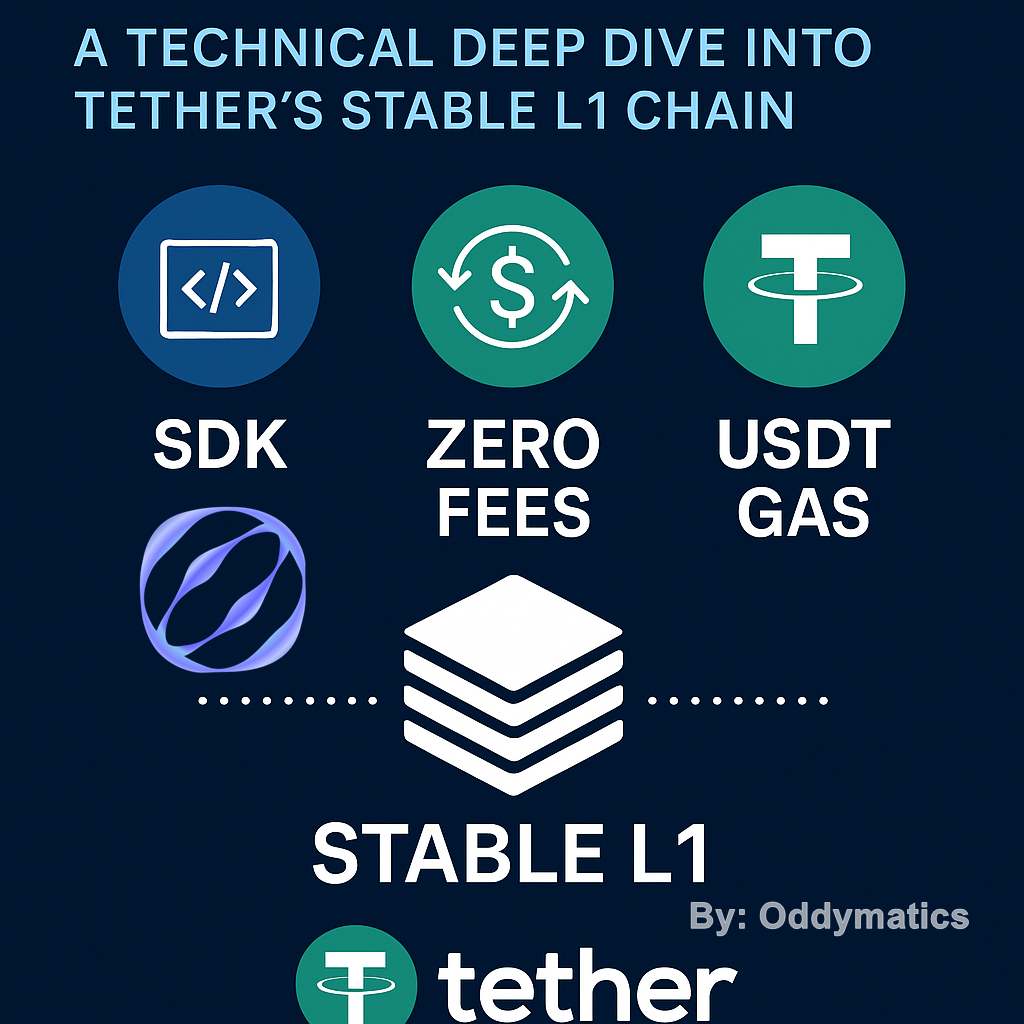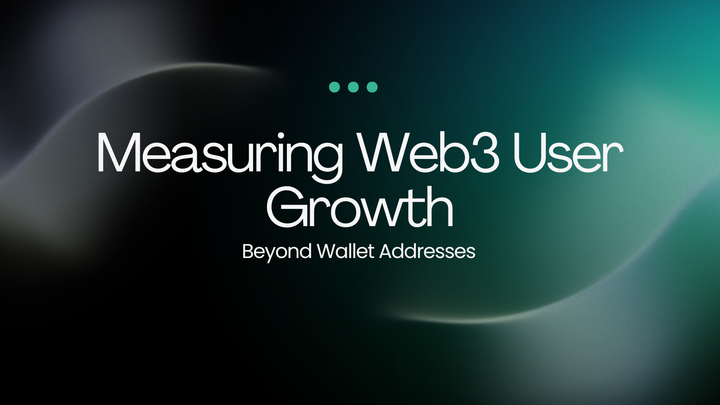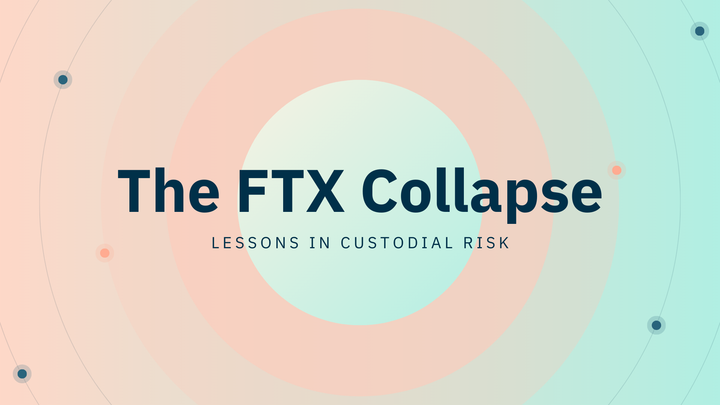SDK, Zero Fees, USDT Gas: A Technical Deep Dive into Tether’s Stable L1 Chain

Tether, the largest stablecoin issuer, has announced its boldest infrastructure move yet, a USDT-native blockchain (Stable L1) designed to eliminate native token volatility and radically reshape fee structures. Unlike traditional Layer 1 (L1) blockchains that rely on native volatile tokens like ETH or SOL for gas, Tether’s new chain proposes a fee model denominated entirely in USDT, the very asset transacted on the network. With zero-fee peer-to-peer (P2P) transfers and a developer SDK already in testnet, this chain aims to position itself as the ultimate stablecoin settlement layer.
Why Gas in USDT Matters
In traditional Layer 1 (L1) blockchains like Ethereum (ETH), Binance Smart Chain (BNB), and Solana (SOL), users are required to pay gas fees in the blockchain’s native token. While this model has served the crypto-native community well, it introduces several layers of complexity and risk when it comes to institutional and enterprise adoption.
Operational Overhead
Institutions are typically focused on efficiency, predictability, and compliance. When a blockchain requires gas fees in a volatile native token:
- Enterprises must acquire and hold that token purely to cover transaction costs.
- They need internal processes to track token balances and ensure wallets are adequately funded with the native asset.
- This adds complexity to treasury operations, as multiple assets need to be managed alongside core business operations.
FX Risk and Volatility
Native gas tokens (e.g., ETH, BNB, SOL) are subject to market fluctuations:
- Their price can swing dramatically within short periods.
- This means the cost of a transaction can be unpredictable in fiat terms (e.g., $0.10 one day, $5 the next).
- For large enterprises, these swings represent foreign exchange (FX) risk that must be hedged, adding cost, complexity, and reliance on trading desks or hedging instruments.
Compliance and Reporting Challenges
Regulatory frameworks often require:
- Clear reporting of all digital assets held
- Risk disclosures on exposure to volatile assets
- Audit trails for how those assets are acquired, stored, and used
Holding native tokens for gas introduces a non-core asset class that must be accounted for, monitored for AML (anti-money laundering), and reported in regulatory filings.
The Advantage of USDT Gas
Tether’s Stable L1 design, where gas is paid in USDT:
- Aligns the asset used for transactions with the asset used for fees - no need to hold or manage extra tokens.
- Eliminates FX volatility - fees are predictable, stable, and denominated in USD terms.
- Simplifies compliance - USDT is already widely used in institutional stablecoin operations, so no additional token management burden.
Comparative Table: Tether Stable L1 vs Traditional L1s
| Feature | Tether Stable L1 | Ethereum | Solana |
|---|---|---|---|
| Gas token | USDT | ETH | SOL |
| Volatility of gas token | None | High | Medium |
| P2P transfer fee | Zero | Variable | Low |
| Institutional FX risk | None | High | Medium |
| SDK availability | Yes (testnet) | Yes | Yes |
Inside the SDK
Tether’s SDK, currently live on testnet, offers:
* API wrappers for easy integration with wallets and payment apps
* Smart contract templates for issuing and managing stablecoin flows
* Gas abstraction modules so developers don’t need to manage USDT gas on behalf of end users
Developers can simulate transfers, build custom fee logic, and experiment with fee-less designs that would otherwise require Layer 2 solutions or sidechains on other networks.
Potential Impact on the Blockchain Ecosystem
| Impact Area | Traditional Chains | Tether Stable L1 |
|---|---|---|
| Remittance Cost | 3-6% (off-chain + gas) | ~0% P2P transfer |
| Onboarding Complexity | High (multiple tokens) | Low (USDT only) |
| Treasury Management | Complex (multi-asset) | Simple (single asset) |
| Volatility Exposure | Present | Absent |
This model could particularly appeal to:
- Remittance providers seeking frictionless rails
- Fintechs building payment apps
- Enterprises requiring stable gas cost predictability
Risks and Considerations
While Tether’s L1 is promising, it must address:
- Centralization concerns: Will validators be open or controlled by Tether?
- Network security: A new chain needs to demonstrate resilience against attacks.
- Ecosystem buy-in: Success depends on wallets, exchanges, and DeFi protocols supporting the chain.
Conclusion
Tether’s Stable L1 represents a radical simplification of blockchain operations for stablecoin users and institutions. By offering gas fees in USDT, zero-fee P2P transfers, and a developer-friendly SDK, the chain could disrupt existing models and bring blockchain payments closer to mass adoption. However, its ultimate impact will hinge on network security, decentralization, and ecosystem adoption, factors that will come into sharper focus as the mainnet launch approaches.
And also, Gas in USDT directly addresses one of the key blockers for institutional blockchain adoption:
✅ Reducing operational complexity
✅ Eliminating token FX risk
✅ Simplifying regulatory compliance
This model could be particularly appealing for:
- Banks and fintechs building blockchain-based payment rails
- Remittance companies seeking predictable transaction fees
- Corporates using blockchain for supply chain or settlement



Comments ()